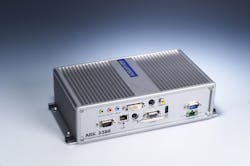Industrial computer manufacturers took in $2.1billion in revenues in 2011 and Frost & Sullivan expects this revenue figure to reach $3.2 billion in 2015. That marks a growth rate of just over 50 percent in four years.
So just what does this mean to you as a manufacturer? If you are a manufacturer of industrial computing equipment, the near-term future certainly looks bright. If you are a manufacturer of anything else and have not upgraded your plant floor computing power in the past several years, it may be time to consider some serious upgrades.
Competition has intensified across all industries, forcing companies to improve quality and productivity. In turn, this has increased the need for industrial computers, says Frost & Sullivan research analyst Katarzyna Owczarczyk. “In each industry, automation systems have progressed beyond programmable logic controllers (PLCs) and supervisory control and data acquisition (SCADA) systems to include robotics or machine vision systems,” thereby driving the need for increased computing power,” she says.
Speaking of machine vision systems, AIA (a machine vision trade association) reports that overall sales of machine vision systems rose two percent year-over-year while sales of machine vision components saw an increase of 10 percent. This increase in sales resulted primarily from purchases of cameras, the largest machine vision components market in North America, which rose by 13 percent compared to 2011. Sales of other machine vision components also rose on a year-over-year basis: software (24 percent), imaging boards (10 percent), optics (2 percent) and lighting (1 percent).
Back on the industrial computing front, Owczarczyk says it is the increasing capabilities of industrial computers driven by advances in processing power and embedded architectures that are behind the expected surge in industrial computing purchases.
“Recent increases in computational and storage capability and the integration of several tasks on one platform have allowed for the creation of computing platforms capable of recording and analyzing terabytes of raw data, resulting in increased process efficiency, quality and productivity,” Owczarczyk says.
Leaders relevant to this article:


